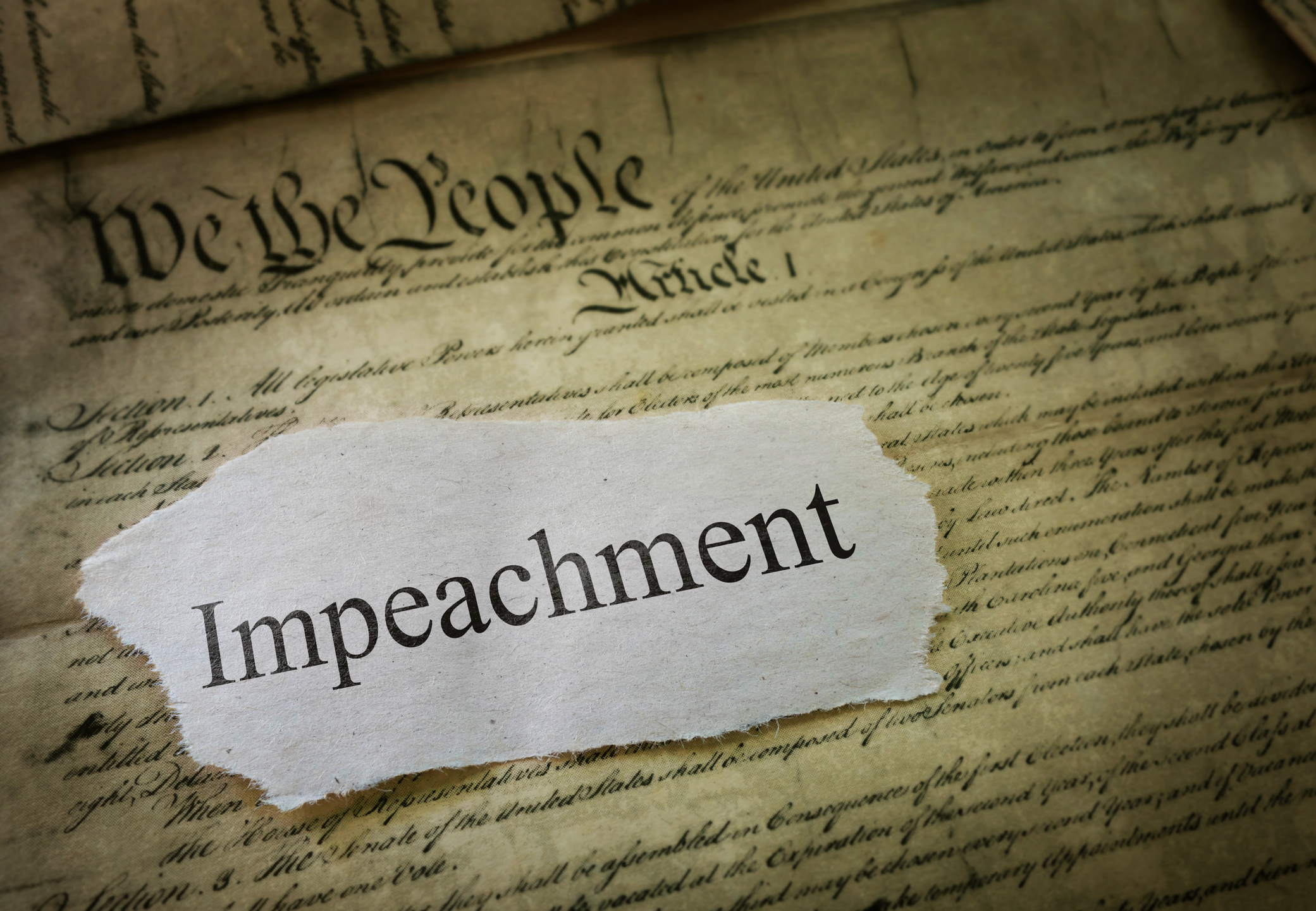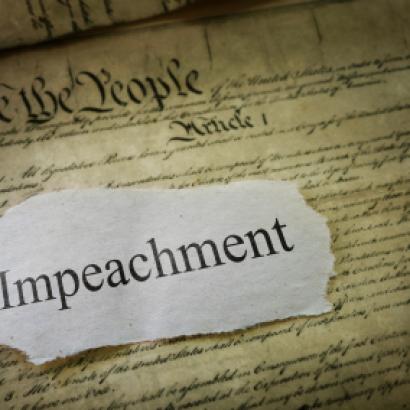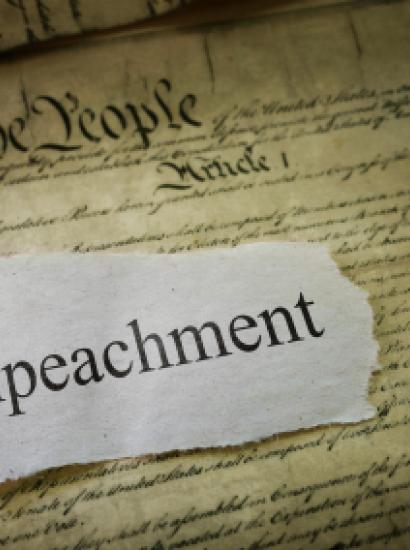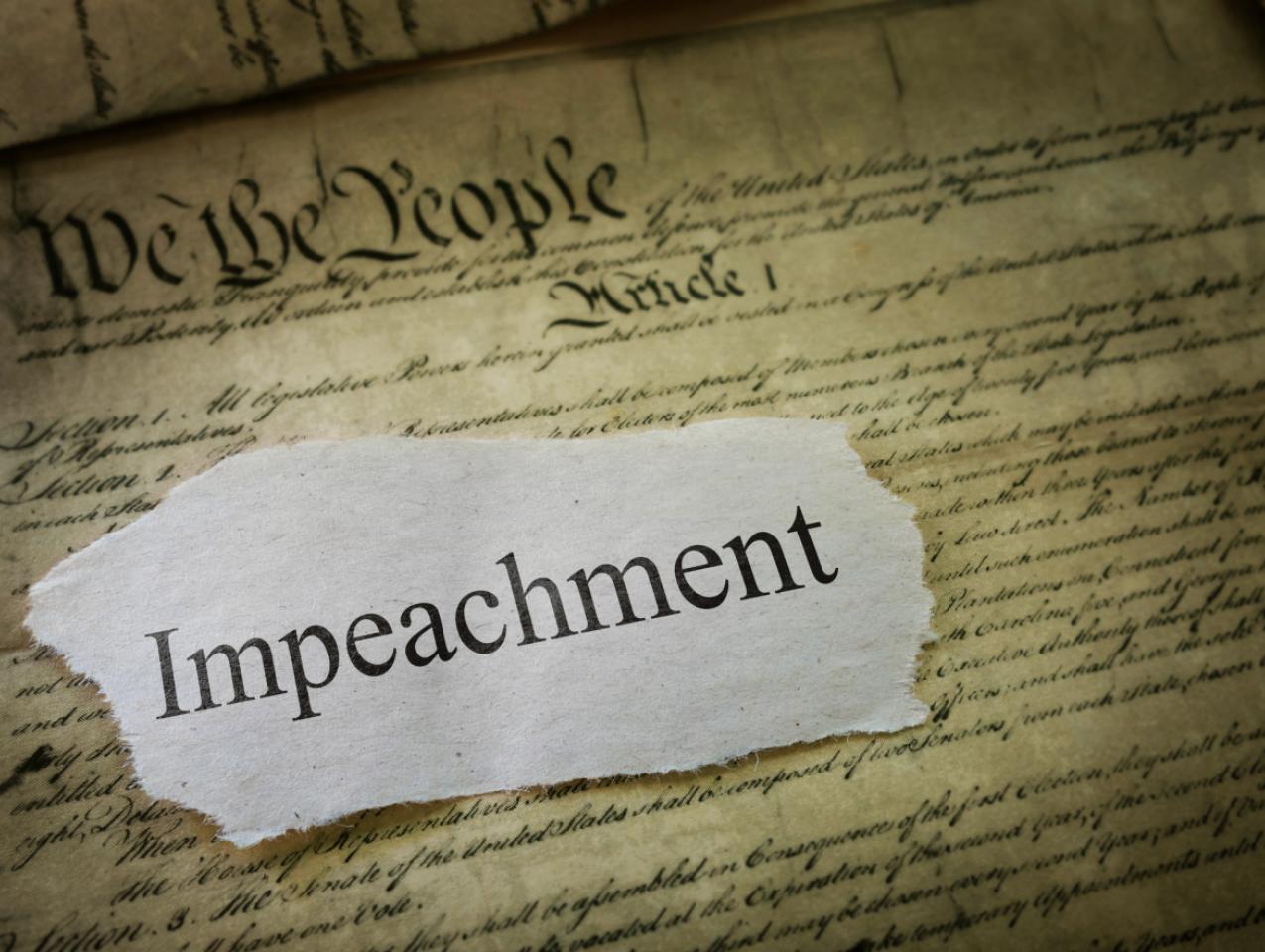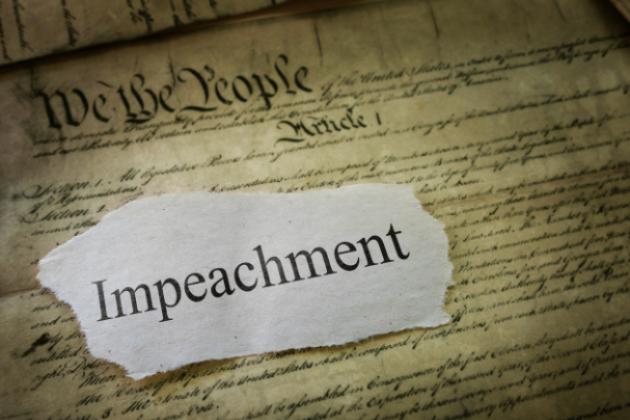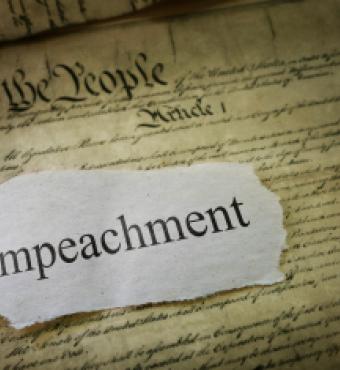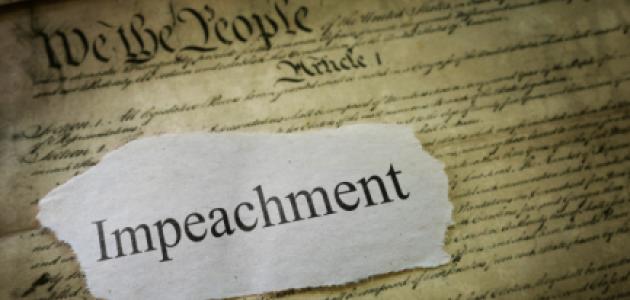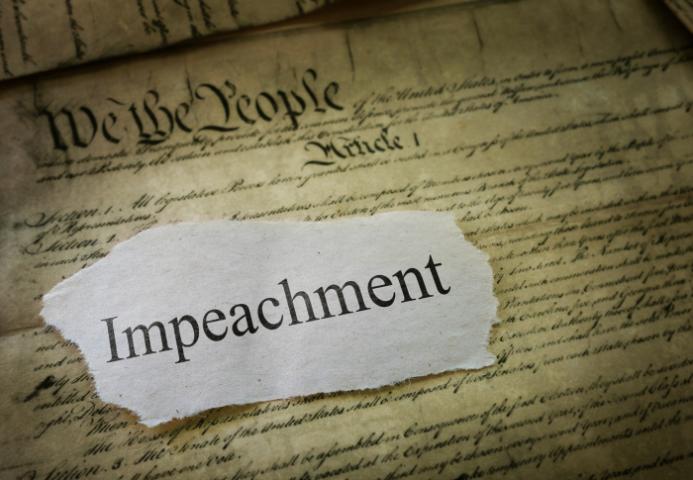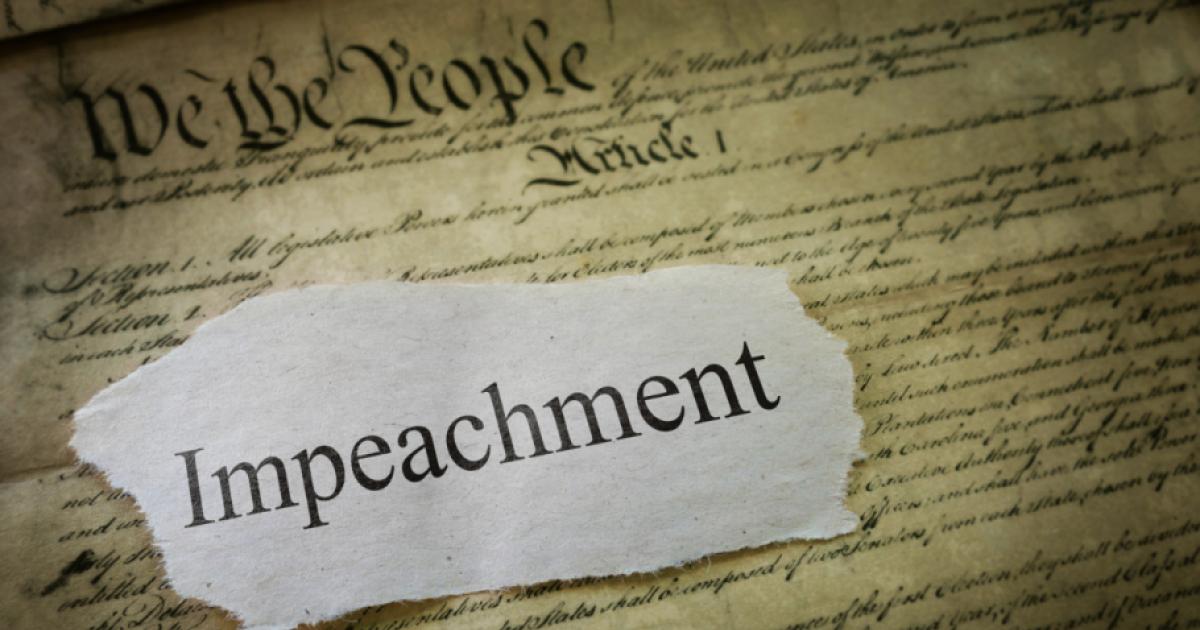- Politics, Institutions, and Public Opinion
- Campaigns & Elections
- State & Local
- California
If presidential impeachment drama is in the cards for Congress this fall, what’s California’s role?
Obviously, the conversation begins with House Speaker Nancy Pelosi. It’s her responsibility to, in effect, decide which rabbit hole for Democrats to descend—whether it’s politically sager to file a single article of impeachment based strictly upon the president’s dealings with Ukraine, or to broaden the charges to include other Democratic hobbyhorses (emoluments, Stormy Daniels, etc.).
And on the Republican side of the aisle: House Minority Leader Kevin McCarthy, a Bakersfield native, will make it his mission to keep his caucus in anti-impeachment lockstep should hearings lead to votes.
There’s one other consideration for Pelosi: should an impeachment article reach the House floor, how many of her Democrats will get a pass—i.e., will be allowed to vote no impeachment without repercussions within the caucus?
As of late last week, 12 House Democrats were not formally on board with an impeachment inquiry. What they have in common: all, save one, represent districts that Trump carried in November 2016.
And not a one comes from California.
That might seem odd, given that freshmen are the most threatened species of incumbent House members—and California has a bevy of them. Last November, seven Democrats won House contests in California in districts previous represented by Republicans.
Yet all seven of those California Democrats want to proceed on impeachment. That includes Rep. T. J. Cox, who represents California’s 21st Congressional District, which runs through the heart of California’s less progressive, socially conservative Central Valley. Cox won his race by all of 1,000 votes, so one might assume that he’d want to pump the brakes on impeachment.
Guess again.
The freshman first-term told reporters: “I didn’t come to Washington to impeach a president, I came here to do everything in my power to give Central Valley working families a hand up and grow our local economy for generations to come. I’ve worked every day to keep the promise.”
Cox continued: “But when the president of the United States is putting his personal and political interests ahead of the American people and abusing the Constitution, we have a duty to investigate and follow the facts where they lead.”
Why isn’t Cox acting more cautiously? Maybe he reviewed 2016’s results back home: he won his congressional race by a slimmest of margins while Hillary Clinton carried California’s 21st CD by 15.5%. In fact, of the 25 GOP-held congressional districts that Clinton carried in 2016, seven were in California. Her average margin of victory in those districts: 6.9%.
However, there’s another factor maybe at play here: freshmen members not wanting to incur the wrath of a Speaker from the same state (to borrow line from Gilbert and Sullivan’s HMS Pinafore: “I always voted at my party’s call, and I never thought of thinking for myself at all”).
With that in mind, it’s a good time to look back at the last House experience with impeachment—and a former member of Congress who showed the right way to navigate the process.
In 1998, California’s 15th Congressional District—at the time consisting of central Santa Clara County and southernmost Silicon Valley—was represented by Republican Tom Campbell (full disclosure: I assisted Campbell when he ran for the US Senate in 2000).
Back in the day, the district had a sophisticated political palate. In the November 2016 election, Campbell received 58.5% of the congressional vote while Bill Clinton received 52.7% of the presidential share. Two years prior, the incumbent Democratic congressman received 59.9% of the district’s vote.
Come the time of Clinton’s impeachment, Campbell acted with the diligence one would expect of a constitutional-law professor (before entering politics, Campbell had taught at Stanford Law School and clerked for the late Supreme Court justice Byron White).
In other words, he looked before he leaped—as opposed to today’s members who seem in a rush to judgment, yea or nay.
I asked Campbell if he’d care to recount his approach to impeachment, and here’s his response verbatim:
During the impeachment proceedings involving President Clinton, I asked for and read the entire Starr Report and the report of the Judiciary Committee. I came to the conclusion that President Clinton had asked at least one individual to submit false testimony in the Paula Jones litigation, and had arranged for her to receive benefits for doing so. I also concluded that President Clinton had not told the truth about this in his grand jury testimony, even though (unlike any other grand jury witness) he was allowed to have his attorney be present. . . .
I then read what President Clinton's attorneys had submitted to the Judiciary Committee and to the full House. Those pleadings did not contest the facts. They only attempted to make the case that failing to tell the truth under oath in a federal grand jury proceeding, failing to tell the truth under oath in a federal civil case, and inducing individuals to give false testimony in the federal civil case did not constitute “high crimes and misdemeanors.” I contacted one of President Clinton's cabinet whom I knew and asked him to convey a request to the president's attorneys. I said I disagreed with their legal position, but I was open to learning of their view of the facts if President Clinton disagreed with the Starr Report or the Judiciary Committee on those facts. The cabinet member took two days and called me back. He relayed that President Clinton had nothing further to submit. I then announced that I would vote to impeach on those counts.
I decided I would not vote to impeach on the counts of obstructing the work of the House Judiciary Committee, as those charges seemed to me more related to the usual give and take between a president and a Congressional committee.
I immediately scheduled town hall meetings throughout my district on this subject. I held six separate town hall meetings. At each, I was met with many constituents who disagreed with me and many who agreed with me. However, all seemed to appreciate that I would offer my explanation to my constituents in person.
During the entire consideration of the impeachment of President Clinton, I never received any encouragement or advice from the Republican leadership in the House. No one from the offices of Speaker Hastert, Majority Leader Armey, Majority Whip Delay, or any other member of Republican leadership attempted to influence me. Nor did any other Republican officeholder, constituent, or person.
However, I was contacted by: 1) a fellow Congressman, a Democrat, whom I considered a friend, who said he had been tasked with persuading me by the White House, saying he knew I would be running for the US Senate, and impeachment would be very unpopular in California; 2) a Silicon Valley venture capitalist of great renown, who also said he had been asked by the White House to contact me, that it would be hard for me to raise money in Silicon Valley if I voted for impeachment; 3) the cabinet member to whom I had reached out, who, despite the refusal of President Clinton’s attorneys to contest the facts, urged me for my own political future to vote against impeachment; and; 4) a famous Hollywood actor who said the White House had asked him to call me, and whose argument was President Clinton was acting the way most men would act when presented with the opportunity for sex, and should not be impeached just for that. (I asked this individual if he had anything to add on the facts or the law of testifying falsely under oath, and inducing another to do so, and he said he did not).
In the end, Campbell voted for two of the four articles of impeachment (three other California GOP members likewise split their votes). But Campbell did so after weighing the evidence, poring over the claims and counterclaims—and, just as important, discussing the matter with his constituents.
Will any California member of Congress do the same diligence with regard to today’s impeachment effort?
A final note about Tom Campbell, California’s 15th Congressional District, and the politics of today: Campbell entered Congress in 1995 via a special election to replace Norm Mineta, the first Japanese-American congressman elected from the lower 48 states. Mineta, whose name now graces the San Jose airport, had left the House to accept Bill Clinton’s offer to serve as secretary of commerce. Several years later, he served in the Bush Administration as secretary of transportation—a Democrat working for a Republican president, rare for these times.
Campbell was succeeded by Mike Honda, an affable man who also was a very traditional liberal—as such, an extension of Nancy Pelosi’s grip on California Democrats.
However, in a new century, and with his district’s lines redrawn, Honda had to fend off challenges from younger Democrats more prone to tech and innovation. Indeed, in 2016 Honda was ousted by Ro Khanna, who moonlights as a top advisor to Vermont senator Bernie Sanders and who, in 2018, was rated as the 25th-least-conservative House member (he was the 14th least conservative in 2017).
In the course of two decades, one of the most forward-thinking corners of California has seen its congressional leadership shift from a measured, moderate Republican to an old-school liberal Democrat, and then to a new-school hard-left Democrat who embraces socialist outcomes.
And Tom Campbell?
Last week, he was back on the Stanford campus, speaking to a group of disaffected Californians about a new political movement he’s helped to launch, the Common Sense Party. His mission: to create a class of California lawmakers who are nonpartisan, inclusive problem-solvers and who will appeal to voters turned off by the two major parties’ extremists.
Maybe Campbell will help solve the partisanship and lack of competition that plagues California’s state legislature.
If that happens, maybe then he can do the same for Congress.







